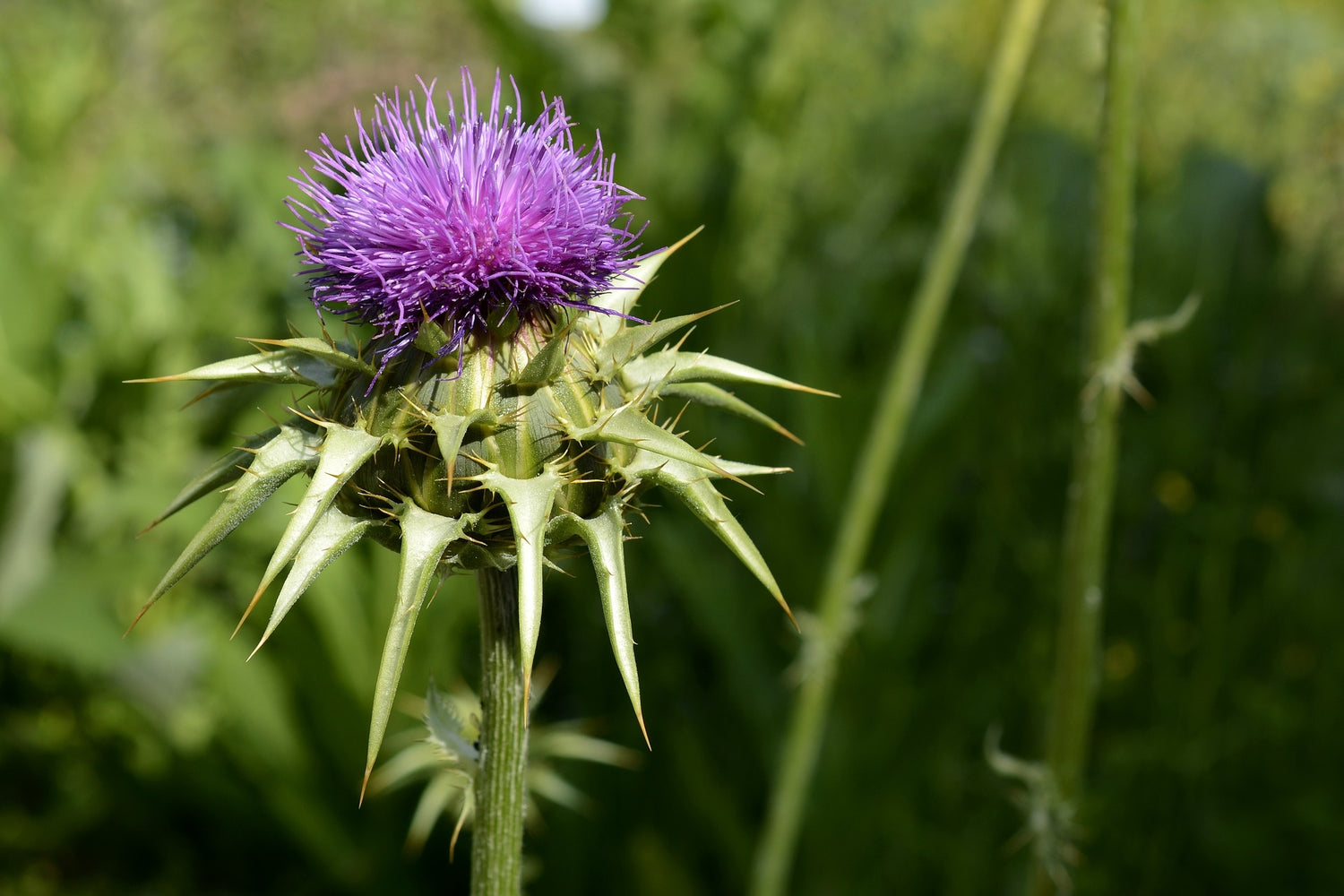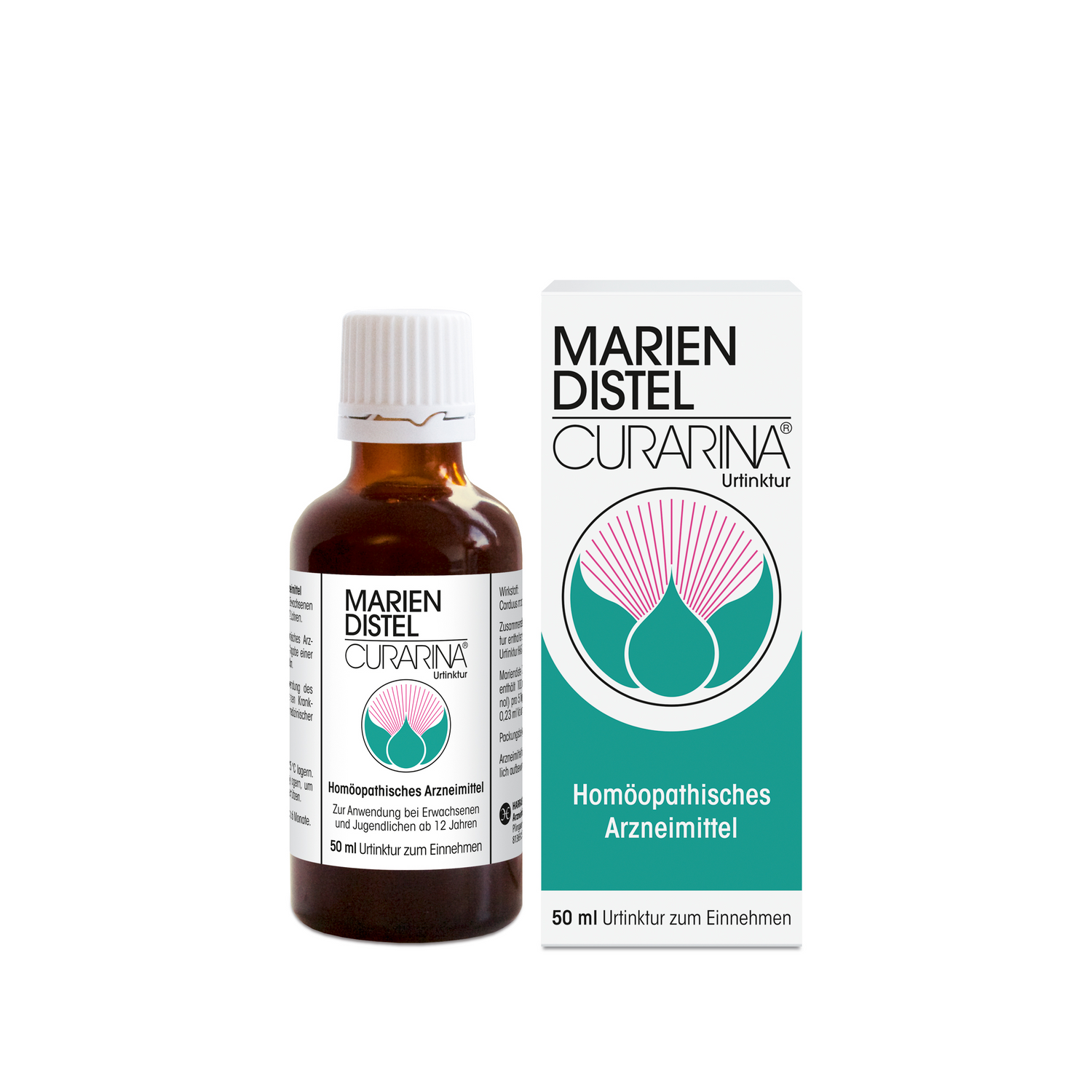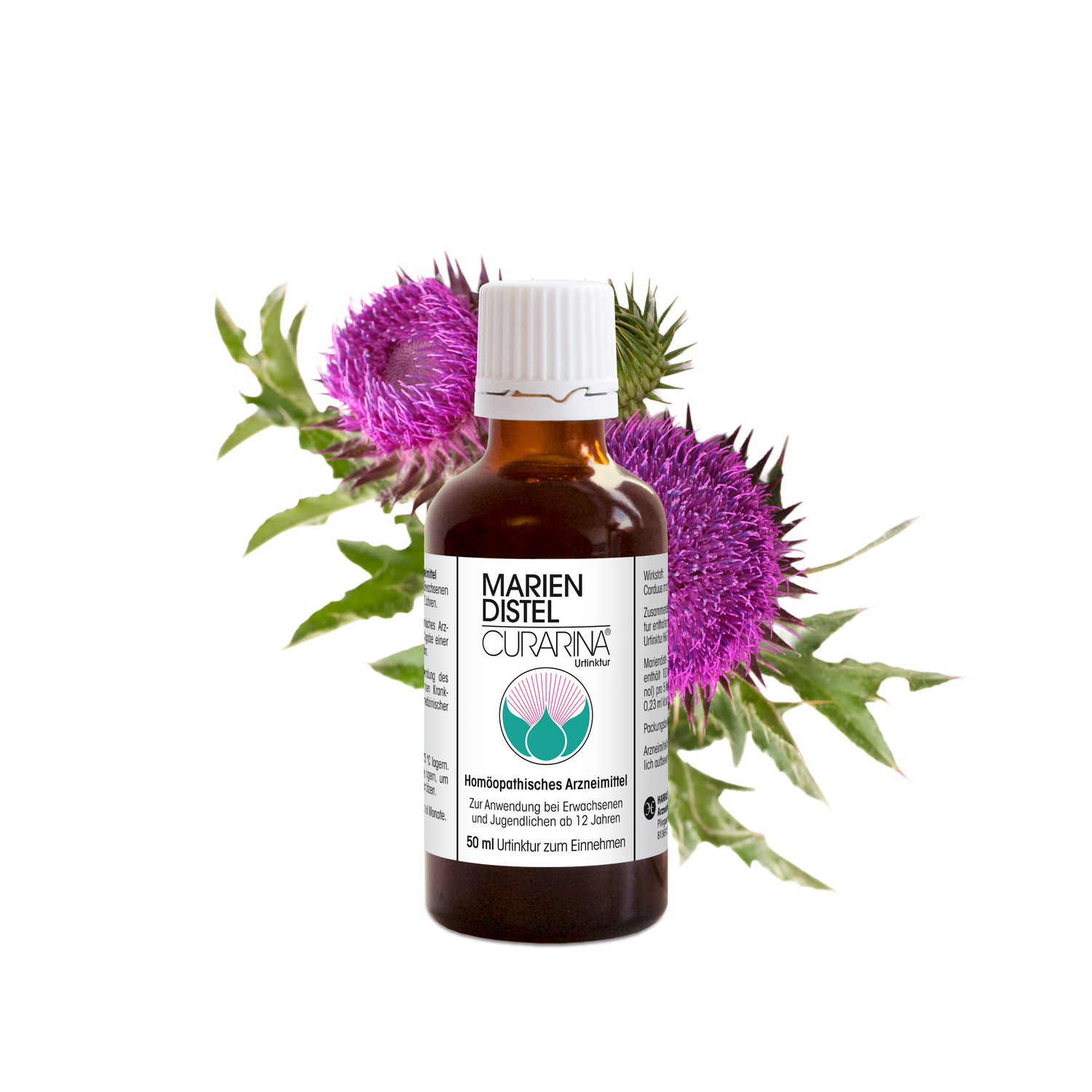
Milk thistle
The name of the milk thistle ( Silybum marianum ) comes from an old legend according to which the white spots on its leaves come from the milk of the Virgin Mary.
Mediterranean region and Germany.
The "detoxifying," or liver-protecting, effect of milk thistle was already known in ancient times. Herbal books from the 16th and 17th centuries already contain references to its effectiveness in liver diseases. Its efficacy and excellent tolerability helped milk thistle achieve an undisputed place in modern medicine.
Today, milk thistle fruits are among the most extensively studied medicinal plants in phytotherapy and homeopathy. Their use in homeopathic pharmacology dates back to the 19th-century physician Rademacher, who successfully employed the plant as a liver, spleen, and gallbladder remedy —known to this day as "Tinctura Rademacheri."
Homeopathy is applied on the basis of an individual diagnosis that takes into account the patient’s specific clinical picture.


